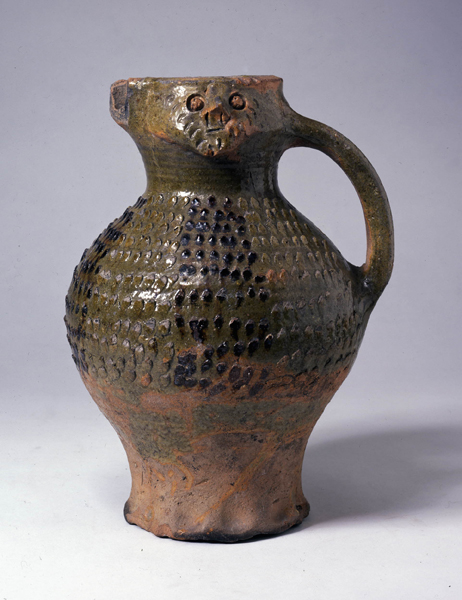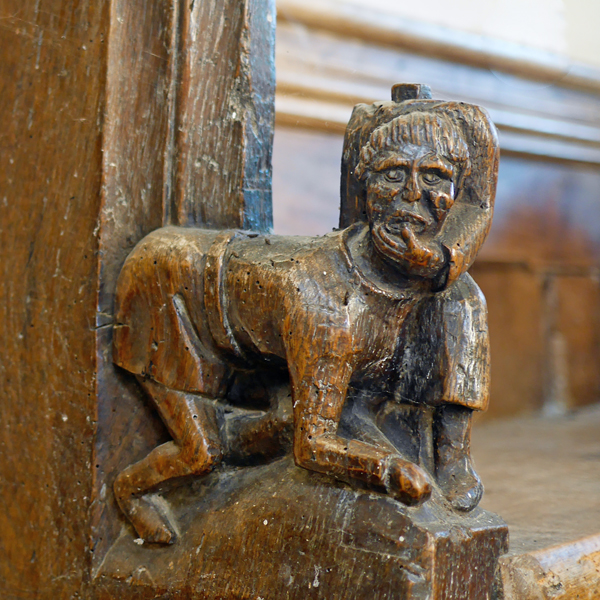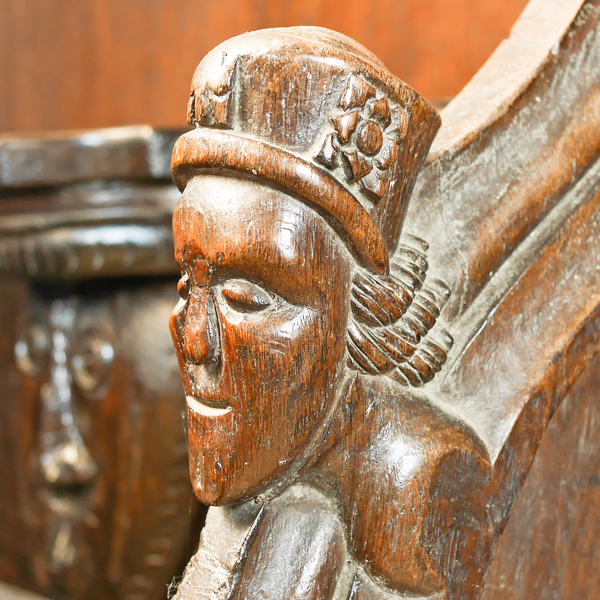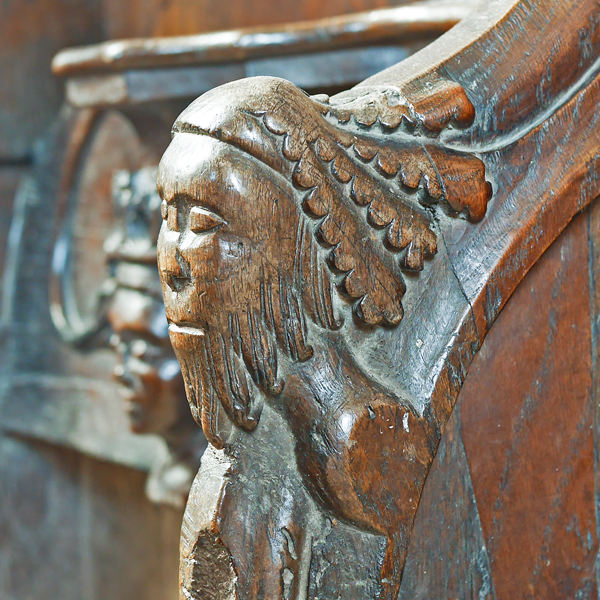
"How awesome is this place! This is none other than the house of God, and this is the gate of Heaven." Genesis 28. 17
The earliest churches in England had no fixed congregational seating. In a limited number of churches, there were stone benches running around the north, south and west walls, or even around the pillars. The weakest people would therefore have gone to the wall, and the remainder either stood or sat on mats or stools.

The normal pews date back to 1845 with poppy head carvings. The poppy head is not named for the  poppy flower, but is apparently derived from the French word "poupee," meaning doll or puppet . In most cases the poppyhead is not a head or a doll's head, but usually, in the churches of East Anglia, it is in the shape of a fleur-de-Iys or trefoil, consisting of foliage or leaves. Some are "erect in appearance with three limbs pointing upward. Others are broad-shouldered and horizontal looking". The poppyhead is placed at the top of the bench end and would sometimes have a hole in the top to hold a candle.
poppy flower, but is apparently derived from the French word "poupee," meaning doll or puppet . In most cases the poppyhead is not a head or a doll's head, but usually, in the churches of East Anglia, it is in the shape of a fleur-de-Iys or trefoil, consisting of foliage or leaves. Some are "erect in appearance with three limbs pointing upward. Others are broad-shouldered and horizontal looking". The poppyhead is placed at the top of the bench end and would sometimes have a hole in the top to hold a candle.
(The figure on the right shows just why they were originally "poupee" or dolls. This carving can be found in the Chancel of another of our Churches -St Mary, Great Massingham. )
Some of the pews at St Botolph's though date to the 15th century and have a fabulous array of bench and pew carvings.
Because literacy was low in many rural areas of the country in those days, other means besides literature were needed to instruct the "common man" in religious matters. This was the case for these carvings and, of course, for stained glass windows.
Perhaps because St Botolph is the patron Saint of Wayfarers, there are the most wonderful carvings from far away places and mythical creatures.

In the Chancel, you will find some fine carvings under the misericords (the tip up seats that make standing a little less tiring). Four are from the medieval period, whilst the moustachioed man is a Victorian replacement and one was carved in 2006 by Norman Kershaw of Anglesey, copying a Grimstonware pottery face from the 14th century.

(The mug opposite is ©Trustees of the British Museum. It shows a very typical mug with a humorous face and typical green glaze. Grimston is best-known for its face jugs, a popular form in medieval Britain. These jugs were decorated with applied pellets and strips on the body, and applied bearded faces and arms on the neck and rim. Most are dated to the 13th and 14th centuries.)
In the Chancel stalls, notice too the monkey heads and the woodpecker at each end & the carvings between the seats include a "Green Man" with leaves around his head.
The second set of Choir stalls are Victorian, when a smoother surface could be produced on the ledges. The late 19th century carvings feature the lion of St Mark, the bull of St Luke, the eagle of St John and the angel/messenger of St Matthew.
The medieval stalls feature a lion, a poor man, a dragon and a mermaid.
Here then are more of our most treasured carvings:
( If you like these, then also look at the carvings found at St Lawrence, Harpley. Click here)



























